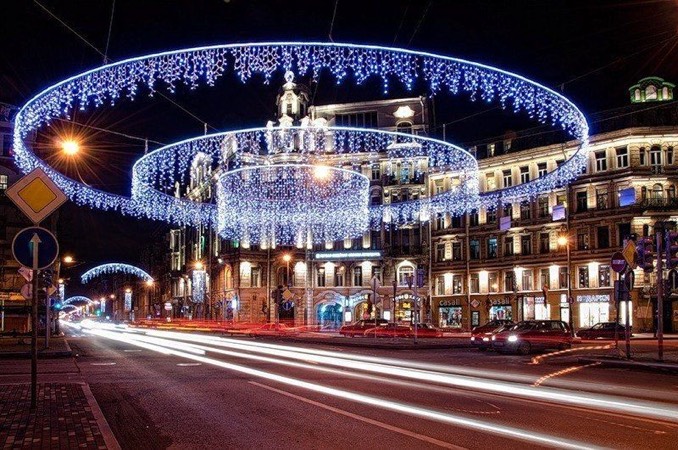Austrian Square
Avstriyskaya Square is an octagonal ensemble at the intersection of Kamennoostrovsky Prospekt and Mira Street, made in the Art Nouveau style. The first settlements in these places date back to the twenties of the XVIII century. At that time, it housed mazankovoy buildings with craftsmen serving the Armory Chancery. A little later, they were moved to Mokhovaya Street, and the buildings were transferred to the Embassy Court.
The buildings existed until the middle of the 18th century, and in the next century the territory was occupied by small wooden buildings surrounded by gardens and vegetable gardens. In 1901-1906, the eminent architect Vasily Shaub modernized the nameless square. He built four houses that formed a regular octagon.
Artist Ernst Liebgart, a favorite of the imperial family and founder of the Hermitage Art Gallery, lived in house number 16. The top of the building is decorated with a pointed tower, and the facade is full of baroque ornaments. House No. 20 received a special award in 1907 thanks to its original facade. It belonged to Mikhail Gorbov, an honorary citizen of St. Petersburg.
The pearl of Austria Square is house number 13. In 1907—1908, the writer Leonid Andreev lived here. The walls of this house remember Alexander Blok and Fedor Sologub, who often visited Andreev's literary evenings. In 1924-1935, a master of St. Petersburg neoclassical art, architect Vladimir Shchuko, who designed the Lenin monument at the Finland Station, lived here.
The building number 15 was built in 1952. The project was created by architects Oleg Guryev and Alexey Shcherbyonok. The house does not copy the style of Schaub, but fits seamlessly into the general ensemble of the Austrian Square. Once upon a time, opera singer Konstantin Laptev lived here.
In 1992, the square finally got its own name. Given that the architecture of the houses located on the square resembles the Austrian one, the city governors called it Austrian as a friendly gesture. Anatoly Sobchak organized a solemn event on this occasion. The wife of the Austrian Chancellor arrived as a guest in the Northern capital.
Address
Austrian pl
Address
Austrian pl
Address
Austrian pl
Website
Austrian Square
Website
Austrian Square
Website
Austrian Square
Source
https://kudago.com/spb/place/avstrijskaya-ploshad/
Source
https://kudago.com/spb/place/avstrijskaya-ploshad/
Source
https://kudago.com/spb/place/avstrijskaya-ploshad/


